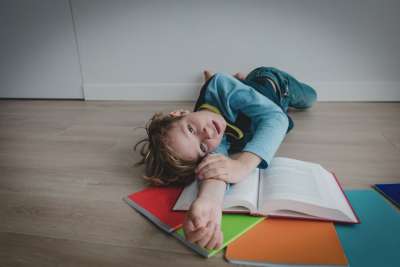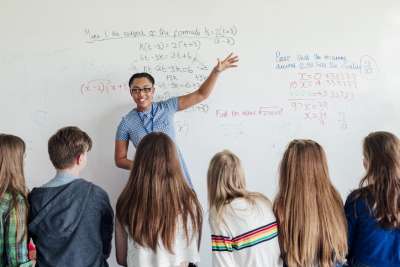Gifted but Learning Disabled: A Puzzling Paradox
ERIC EC Digest #E479, Author: Susan Baum, 1990
How can a child learn and not learn at the same time? Why do some students apply little or no effort to school tasks while they commit considerable time and effort to demanding, creative activities outside of school? These behaviors are typical of some students who are simultaneously gifted and learning disabled. For many people, however, the terms learning disabilities and giftedness are at opposite ends of a learning continuum. In some states, because of funding regulations, a student may be identified and assisted with either learning disabilities or giftedness, but not both.
Uneasiness in accepting this seeming contradiction in terms stems primarily from faulty and incomplete understandings. This is not surprising, because the "experts" in each of these disciplines have difficulty reaching agreement. Some still believe that giftedness is equated with outstanding achievement across all subject areas. Thus, a student who is an expert on bugs at age eight may automatically be excluded from consideration for a program for gifted students because he cannot read, though he can name and classify a hundred species of insects. Many educators view below-grade-level achievement as a prerequisite to a diagnosis of a learning disability. Thus, an extremely bright student who is struggling to stay on grade level may slip through the cracks of available services because he or she is not failing.
Who Are the Learning Disabled/Gifted?
Recent advances in both fields have alerted professionals to the possibility that both sets of behavior can exist simultaneously (Baum and Owen, 1988; Fox, Brody, and Tobin, 1983; Whitmore and Maker, 1985). Children who are both gifted and learning disabled exhibit remarkable talents or strengths in some areas and disabling weaknesses in others. They can be grouped into three categories: (1) identified gifted students who have subtle learning disabilities, (2) unidentified students whose gifts and disabilities may be masked by average achievement, and (3) identified learning disabled students who are also gifted.
Identified Gifted Students Who Have Subtle Learning Disabilities
This group is easily identified as gifted because of high achievement or high IQ scores. As they grow older, discrepancies widen between expected and actual performance. These students may impress teachers with their verbal abilities, while their spelling or handwriting contradicts the image. At times, they may be forgetful, sloppy, and disorganized. In middle school or junior high, where there are more long-term written assignments and a heavier emphasis on comprehensive, independent reading, some bright students find it increasingly difficult to achieve. Concerned adults are convinced that if these students would only try harder, they could succeed.
While increased effort may be required for these students, the real issue is that they simply do not know how! Because they may be on grade level and are considered gifted, they are likely to be overlooked for screening procedures necessary to identify a subtle learning disability. Identification of a subtle disability would help students understand why they are experiencing academic difficulties. More important, professionals could offer learning strategies and compensation techniques to help them deal with their duality of learning behaviors.
A word of caution is necessary at this point. A learning disability is not the only cause of a discrepancy between potential and achievement. There are a number of other reasons why bright children may be underachieving. Perhaps expectations are unrealistic. Excelling in science, for example, is no assurance that high-level performance will be shown in other academic areas. Motivation, interest, and specific aptitudes influence the amount of energy students are willing to apply to a given task. Social or emotional problems can interfere with achievement. Grades and school are simply unimportant to some students. Some youngsters have not learned how to study because, during primary grades, school was easy and success required minimal effort.
Unidentified Students
The second group of youngsters in which this combination of learning behaviors may be found are those who are not noticed at all. These students are struggling to stay at grade level. Their superior intellectual ability is working overtime to help compensate for weaknesses caused by an undiagnosed learning disability. In essence, their gift masks the disability and the disability masks the gift. These students are often difficult to find because they do not flag the need for attention by exceptional behavior. Their hidden talents and abilities may emerge in specific content areas or may be stimulated by a classroom teacher who uses a creative approach to learning. The disability is frequently discovered in college or adulthood when the student happens to read about dyslexia or hears peers describe their learning difficulties.
Identified Learning Disabled Students Who Are Also Gifted
These bright children, discovered within the population of students who are identified as learning disabled, are often failing miserably in school. They are first noticed because of what they cannot do, rather than because of the talent they are demonstrating. This group of students is most at risk because of the implicit message that accompanies the LD categorization that there is something wrong with the student that must be fixed before anything else can happen. Parents and teachers alike become totally focused on the problem. Little attention, if any, is paid to the student's strengths and interests, other than to use them to remediate weaknesses.
Interestingly, these children often have high-level interests at home. They may build fantastic structures with plastic bricks or start a local campaign to save the whales. The creative abilities, intellectual strength, and passion they bring to their hobbies are clear indicators of their potential for giftedness (Renzulli, 1978). Because these students are bright and sensitive, they are more acutely aware of their difficulty in learning. Furthermore, they tend to generalize their feelings of academic failure to an overall sense of inadequacy. Over time, these pessimistic feelings overshadow any positive feelings connected with what they accomplish on their own at home. Research has shown that this group of students is often rated by teachers as most disruptive at school. They are frequently found to be off task; they may act out, daydream, or complain of headaches and stomachaches; and they are easily frustrated and use their creative abilities to avoid tasks (Baum and Owen, 1988; Whitmore, 1980). Since school does not offer these bright youngsters much opportunity to polish and use their gifts, such results are not surprising.















